Hunting: conservation tool?
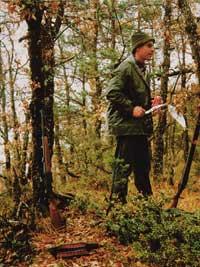
Positions for and against hunting generate hot debates. While supporters defend it as a right, opponents regard it as an action against the environment and ethics. The latter do not lack reason, since hunting (or some forms of hunting) has caused numerous catastrophes. It has rarely been said, however, that hunting can serve to maintain or improve the natural value of a medium, since the interest of hunters is that there are as many hunting pieces as possible in a territory. Even so, hunters should be aware of the need to keep the environment in good condition and ensure the survival of wild populations, and especially farmers and landowners, who are ultimately responsible for the management to be carried out on these lands. To achieve this goal, adequate management of populations and habitat is necessary, since the maintenance of a species involves the conservation of its habitat.
In addition, hunting can serve to alleviate the crisis of agriculture. In fact, hunting practice can be an alternative or complementary use of non-profitable territories. In the Picos de Europa, the income obtained through major hunting has a great economic importance for its populations. In Euskal Herria, Koartango's hunting ground has become an important complementary activity in agriculture.
On the other hand, hunting can also serve to control the affected populations. As a result of the loss of natural predators and the changes that humans have produced in the environment, some species grow uncontrollably to the detriment of the environment and others. The biological capacity of a medium with respect to a particular species is the number of specimens of this species that can maintain their resources without damage or restrictions. The development of a population above this number of individuals will excessively reduce the resources present in the area as a result of overexploitation and reduce the biological capacity by decreasing the number of specimens of this species that can live sustainably in the area. In the Gorbeia Natural Park, for example, due to the excessive density of deer, the forest is under great pressure and many animal machines die from hunger and weakness. A few years ago, on the contrary, some of the selected deer (sick, looking bad, etc.) has managed to revitalize the forest by killing it.
Hunting management
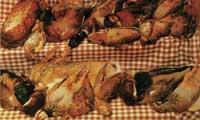
The hunting of a species may be due to various reasons: obtaining a yield of the animals (meat, leather); considering it as sport, that the capture itself requires difficulty, danger, effort or skill; that the population of the piece is controlled for the damage it produces; and that what is more important today is a leisure activity.
Since Law 4/89 on the Conservation of Natural Spaces, Flora and Wildlife, in all the Autonomous Communities the Hunting Management Plans (PORN) are mandatory, whose responsibility is to obtain information on the ecology and populations of the hunting species and decide the measures to be taken according to their objective. Knowing the ecology of the species will provide us with information relevant to its management. In fact, depending on the biological cycle, activity, social organization, habitat, grazing and reproductive time, hunting will have different effects in terms of its conservation and hunting practice. It is not the same to hunt in the passage of the torcaz dove as in the contrapasa; in the passage, the population has just grown and on the way to the south many specimens die due to the winter and the great migratory effort. At that time hunting does not have to cause great damage to the population of torcaz dove. However, in contrapasa, due to the level of winter mortality, the population heading north is much smaller and, in addition, they are specimens that must perform the following reproduction. Their hunting directly influences the number of chickens born that year and seriously affects the population.
For proper hunting management it is necessary to know the number of specimens of a population and for this purpose censuses are used. For the elaboration of these censuses different techniques can be used depending on species, means, resources, etc. Direct observation is the simplest technique, but it is not always possible, for example, for the difficulty of contemplation of the animal or for the impossibility of separating each specimen when the animals are in large groups. In these cases, other techniques should be used: proration, transit, occupation, indices, etc. In the case of indices, the number of signs or traces of any activity left by animals is related to the size of the population. For example, the amount of manure collected in the lottery one night has been used to calculate the size of the colonies of starlings.
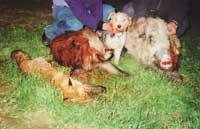
Although it is important to know the number of specimens of a species, the population presents fluctuations over time and the knowledge of its dynamics can be, in some cases, as important or more important than the knowledge of the absolute figures. The parameters that will be taken into account for the analysis of this dynamic are, among others, the structure by sex and age, reproductive success and survival/mortality rates.
Since the proportion of males/females has a direct incidence in reproduction, the relationship between both sexes must be analyzed at all times, resorting to maintaining the most appropriate. The different aspects of the ecology of the species are very important in this proportion: whether it is monogamous or polygamous, whether both sexes have a tendency to dispersion or to a different survival, etc. Knowledge of the proportion of young people and adults is also very useful in species with great life expectancy and in which different age classes can be well defined. In the case of major hunting it is usual to use old pyramids. The shape of the age pyramid and the proportion of males/females by age class may be important to know the future structure of the population. But for this we also have to take into account reproductive success, since not all hatchlings can survive. Therefore, it will depend on reproductive success, birth, survival/mortality rate, and factors such as density, time, disease, or road accidents.
Once the situation and evolution of the population is known, management can propose two clearly differentiated objectives: on the one hand, reduce the number of animals to an amount that will not cause damage (although this is limited to very few cases); on the other, increase exploitation, that is, extract the largest possible number of the population without endangering the future of the population; achieve a Continuous Maximum Harvest (UMJ).
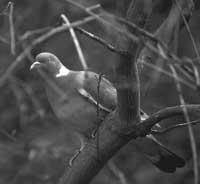
According to these two objectives in the management of hunting species, the extraction can be done in two ways. In the case of harmful species, overexploitation will be promoted by pushing the disappearance of the population, while if we seek the optimization of the extraction UMJ must be calculated. For this it will be necessary to know how the populations grow and recover. With this objective various mathematical models have been developed and used, among which are the simplest, with unstructured models. They do not take into account the structure of the population; the variables are the size of the population, the biological capacity of the area and the rate of growth (birth/mortality). When the population size is small, population growth is exponential. However, as the population increases, environmental resources (e.g. food, guards) are progressively decreasing, which is zero when the population reaches or exceeds the biological capacity of the environment. How the production of the population changes to be exploited. The most important implication of this model is that the maximum production of the population is not reached in the maximum density, but in the mean. We can follow different strategies of exploitation of the population. One of them is the establishment of quotas, which set the number of specimens to hunt. Another strategy is to set the effort, limiting for example the number of hunters or hunting days.
This type of model, for its simplicity, has been widely used, but it is not always the most suitable. On the one hand, the growth rate is not always constant, since it depends on variables such as environmental conditions, and on the other hand, hunting is not random: in the case of big game, for example, the most appreciated prey are males or larger specimens. This changes the population structure and this can affect production. Therefore, in some cases it will be necessary to take into account all possible variables that affect the dynamics of the population; the models that do so are structured: they will calculate the production and will allow to predict the response of the population to the exploitation.
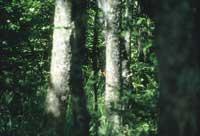
But in addition to knowing the state and evolution of the population, we have the possibility to act to the extent that it is possible to change the environment. This leads us to habitat management, which is the territory that allows a species to meet all its needs and delimits the biological capacity that corresponds to each species. The manipulation of the factors that influence this can help or hinder the life of populations of different species. Since the ecology of each species is very different, each case requires different types of habitat management. In very closed forests, to increase the number of grasslands for large mammals, opening clearings is an opportunity. Another alternative may be the setting of reserves in hunting grounds, in which, prohibiting hunting, will constitute an important refuge for populations.
The principle of the deer: two paths for hunting
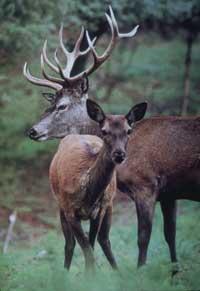
In the hunt for the deer two different objectives can be proposed, the production of grain (maximum production) and the hunting of trophies, and the management to achieve one or the other will be radically different. Depending on the objective, we will manage the two sexes as two different populations, so that in the first case we have as many females as possible and in the second, so that the males remain in perfect condition.
When we want a large number of specimens, we must maintain a high proportion of females, as in the case of cattle, since those that have offspring are the grips. We will leave only the minimum number of males able to avoid problems of consanguinity, which will be considered competitors of the females.
Trophy hunting values the size and shape of the branch. Depending on age and fitness, it will be important to have enough food. For this, the density of deer must be low, especially that of females, since they act as competitors of males. Trophy hunting is done on rececho; the hunter, with the help of the forest guard, hunts a specimen with the specified characteristics. Hunting in this way affects that the chosen animal will only die; due to its great selectivity and a deep knowledge of the behavior of the animals, this method has been presented as a model of ecological hunting. It is a game practiced in a very different way: with dogs or people, the animals are headed towards hunting stalls. Although a large number of hunters allow hunting, its impact is very high. Therefore, it will be better to hunt for stalking, but it is not always possible (very scared animals, closed forests).
Conservation tool
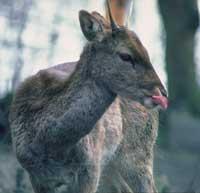
Today, when the environment is threatened by multiple causes (habitat destruction, overexploitation of resources, pollution,...), it seems paradoxical to say that hunting with well-known results can be combined with nature conservation. In order to know if a certain species can be subjected to a hunting pressure, it must first be known about its ecology. This will allow us to know if this species can be sustainably exploited or, on the contrary, if its hunting should be prohibited.
Faced with ethical criteria, it cannot be denied that hunting is done with the death of animals, which seems a contradiction with the word conservation. But we must be clear that the conservation of a species or population should not involve the maintenance of the life of each specimen. This has a relative importance for the benefit of the environment and the species, and especially if the money obtained from hunting is invested properly: if it becomes an economic resource of several agricultural territories, in addition to the diversity of species, it can contribute to the maintenance of indigenous lifestyles or at least provide an alternative solution. In this way, the economic benefits can come to the fore compared to the advantages that management can entail directly in the environment. The improvement of the habitat will directly affect the quality of life of the people of the hunting grounds and the people who approach them, so that interest in hunting can be beneficial for the whole of society.
Buletina
Bidali zure helbide elektronikoa eta jaso asteroko buletina zure sarrera-ontzian











